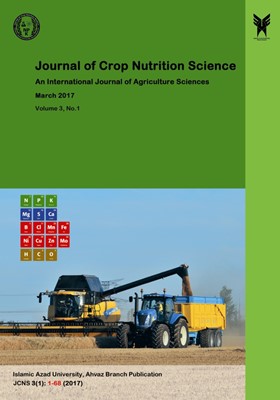-
-
List of Articles
-
Open Access Article
1 - Influence Different Level of Humic Acid and Irrigation Regime on Seed Yield and Morphological Traits of Corn under Warm and Dry Climate Condition
Kazem Banitamim Alireza Shokuhfar -
Open Access Article
2 - Effect of Organic and Chemical Fertilizers on Growth Parameters and Essential Oil of Iranian Basil (Ocimum basilicum L.)
Jalil Dehghan Samani Abdollah Ghasemi Pirbalouti Fatemeh Malekpoor -
Open Access Article
3 - Feasibility Study on Reducing Lead and Cadmium Absorption in Sweet Basil (Ocimum basilicum L.) With Using Active Carbon
Solmaz Divani Farzad Paknejad Hossein Ghafourian Mojtaba Alavifazel Mohammad Reza Ardakani -
Open Access Article
4 - Study of Different Fertilization Methods on Oil Palm (Elaeis guineensis) Vegetative Factors
Abdol Amir Rahnama Abdol Hamid Mohebi Mohammad Khayat -
Open Access Article
5 - Maize (Zea mays L.) Response to Nitrogen Fertilizer under Drought Stress at Vegetative and Reproductive Stages
Adel Modhej Maryam Davoodi Behrang Behdarvandi -
Open Access Article
6 - Evaluation Effect of Vermicompost and Nano Iron on Agro-Physiological Traits of Corn (Zea mays L.)
Arash Roozbahani Elham Mohammadkhani
-
The rights to this website are owned by the Raimag Press Management System.
Copyright © 2021-2025







